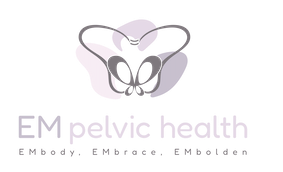
A six-week check-up postpartum is the standard for clearance to resume sexual activities, fitness regimens, and other “normal” routines, but how do you know if your body is truly READY to leap back into your favorite fitness classes?
From a growing uterus, to stretching muscles and connective tissue, to changes in posturing, hormones, pelvic stability, and finally, the trauma to the pelvic floor and abdominals during labor and delivery, the human body changes an enormous amount during pregnancy. A six-week check-up is generally a quick appointment to make sure that incisions, tears, and tissues are healing well, and give clearance to resume normal daily activities (i.e. sex, workouts, and moving without restriction). However, often times, concerns about incontinence, abdominal separation, etc are not fully addressed, and in some cases, are dismissed completely, leaving a new mother to assume that her body is prepared to return to her usual fitness regimen without concern or worry. Below are 5 tips to help ensure that your body is truly ready to make its comeback.
-
BEFORE you leave your six-week check-up, discuss and ADDRESS any postpartum aches, pains, or uncertainties you may have about returning to your fitness regimen. Think you might have diastasis recti? Ask your OB-GYN to assess you, refer you, or write you a script to see a physical therapist who can help. Still peeing when you sneeze? If they say that it should resolve on its own, ask them what the appropriate timeline is for resolution, and if it doesn’t resolve within that time frame, ask for referrals and resources up front (it’s much easier to get a referral or resource at the time of your appointment and not need it, than waiting to get one until you are certain you do need it)
-
Begin the “comeback” slowly and deliberately. Focus on the foundation work. This means breath work, lower abdominal activations, pelvic floor contractions (and relaxations), and a steady buildup of endurance activities. It’s easy to forget how important the core and pelvic floor muscles are when they are working optimally, but without proper neuromuscular re-education, there is a greater chance of injury, particularly when resuming high intensity, high volume, or high load exercises.
-
Listen to your body – it’s changed a lot, and it will be sending information that you need to pay attention to. The exercises performed should NOT hurt. They should feel challenging, without feeling painful. If you experience incontinence, bulging of the tissues in your abdomen, or increased low back pain, you should seek an evaluation from a physical therapist.
-
Set REALISTIC goals. Every single body is different. If you are breastfeeding, you should not expect to lose all of your baby-weight within three months. If you are a working mom that’s averaging 4 hours of sleep a night, it may take you longer to recover between workouts. What you did before and during your pregnancy can affect how quickly you ramp up to your normal routine. Be graceful with yourself, and set goals that are SMART (specific, measurable, attainable, realistic, timely)
-
BE PROACTIVE – Seek out the help of a physical therapist that works with postpartum women, that can evaluate how you are moving, and what areas need supportive guidance in order to return to your full workout routine and minimize your risk for injury. It is better to invest the time in addressing concerns up front, than to wait until an exacerbation or injury occurs.
Dr. Arienne Wrigley is a physical therapist that specializes in orthopedics and women’s health. For more information, visit www.doctorarienne.com, or follow @doctorarienne on Instagram and Facebook.

